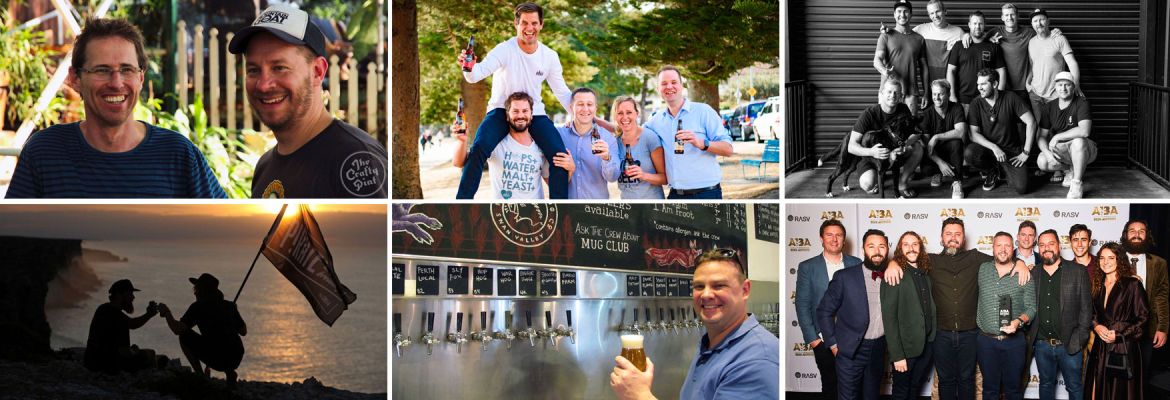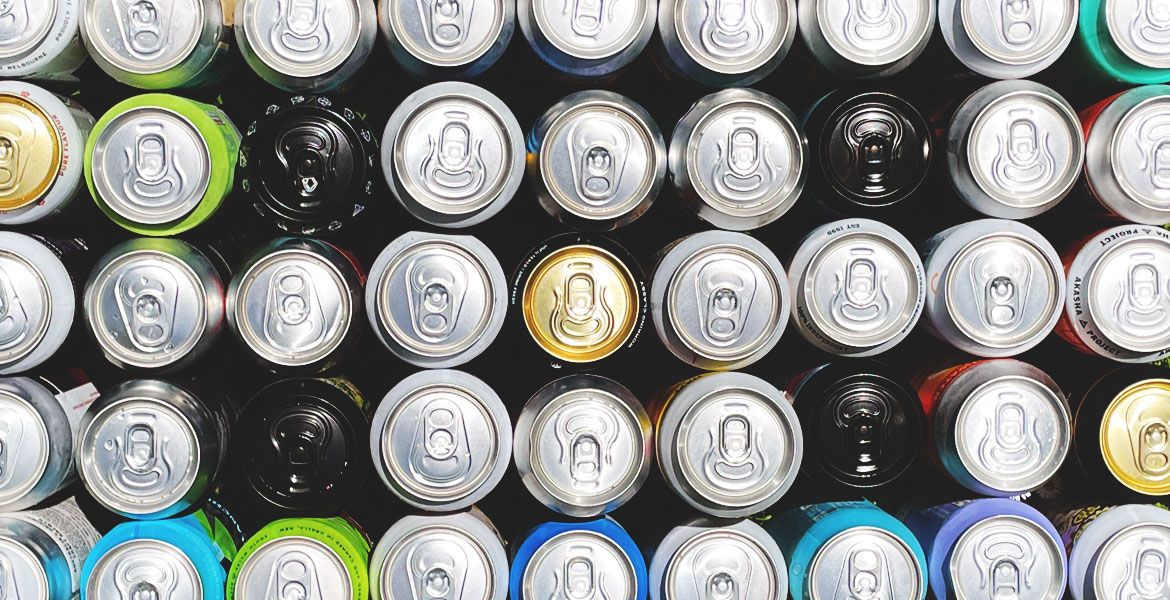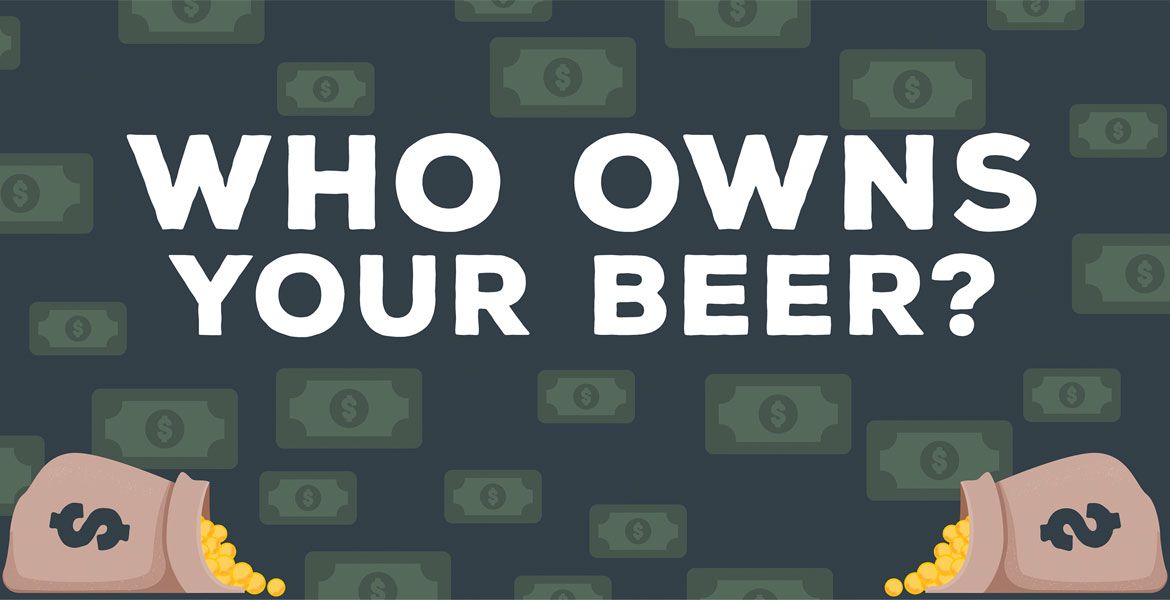In day three of our Ten Days Of Crafty series looking back over the past decade in Australia, we look at how the industry has grown. We've also updated our Who Owns Your Beer? infographic and created a new one featuring a snapshot of how the industry looked ten years ago. You'll find all articles in the series here.
If you look back to the early years of The Crafty Pint's existence, the challenges of the local craft beer industry can really be distilled down to one thing. Sure, quality, consistency, education, funding, market access, excise tax and more were all part of the game, but there was arguably one challenge that trumped them all and united everyone who wanted to enjoy something other than the lagers that had dominated for generations.
The craft beer community needed to convince the wider world it was here to stay. That it wasn't a fad that would fade, a novelty to be played with and discarded before you could get back to serious matters like wine and the pets of big name chefs.
If I had to name a time when this goal was achieved (and, yes, some might argue it's still an ongoing process), I'd plump for 2013. Not only was the growth of the industry accelerating – both in terms of the reach of the bigger microbreweries (I think we still used that term then) and the number of new breweries, beer venues, specialist retailers and events – but it was becoming blatantly apparent this wave wasn't going to subside like the earlier rise and fall of the late 80s and into the 90s.
There seemed to be a slight shift in tone in some of the media coverage, often driven by the sheer size and scale of the biggest events, such as the one-two punch that was Good Beer Week and GABS – even if the people behind such events still felt a need to quote the praise of international visitors to gain credibility.
Admittedly, outside of a few shining lights, beer coverage in the mainstream media still seems to rotate through the same stories – craft beer is expensive; wow, women actually drink and brew it; Christ, they use weird shit in beer – but there was an acknowledgement this really was "a thing".
By reaching new drinkers and into new parts of Australian life, whether through collaborations outside the beer bubble or securing spots on the drinks list beyond the early adopting beer bars and craft-focused pubs, momentum grew.
As it did, it became harder for naysayers to dismiss it as beer for "hipsters" or "wankers" (admittedly, many of us really are wankers when it comes to drinking and discussing beer). After all, there was a good chance someone holding such a view would rock up to a barbie and find one of their best mates had brought a sixer of 4 Pines, Stone & Wood, Mountain Goat, Gage Roads or Feral along.
As the years passed, sheer weight of numbers added ballast to craft beer's place in the wider food and drink landscape. And as brewers got better, explored new techniques and styles, showcased the wonders of beer and food pairing, started gaining a foothold at music festivals and even sniffing away at the fringes of the Big Beer stronghold that is sports, the challenge evolved from proving they were here to stay to one of: "How far can we go?"
Of course, the major beer companies – when not preoccupied with buying, merging and swapping brands with each other – weren't going to take such an insurgency lying down. Given a heads up on what was coming by what was unfolding in the US, they embarked on a policy along the lines of: "If you can't beat 'em, buy 'em."

While Kirin / Lion's acquisition of Little World Beverages was the first big move – all $381.6 million of it – the former already owned 36 percent of Little Creatures and White Rabbit's parent company at the time of the full takeover. As such, it was Asahi's purchase of Mountain Goat in 2015 that was the first real shockwave for many, even though rumours had swirled for months.
Since then, Lion have focused on international acquisitions and building Little Creatures overseas, while creating a series of brewpub-style operations here. The ever-evolving creature that was various parts CUB, SABMiller and AB InBev amassed 4 Pines, Pirate Life and Balter (while looking to resurrect Matilda Bay), while arguably the most innovative small brewery of the past fifteen years, Feral, was snapped up by Coca-Cola Amatil.
More recently, Asahi added Green Beacon to their portfolio before leaping to the head of their class by taking CUB off AB InBev's hands to amass an armoury of former independents responsible for two Champion Australian Beer, three Champion Large Australian Brewery, three Champion Medium Australian Brewery and two Champion Small Australian Brewery trophies at the Australian International Beer Awards since 2015. Which, when you look at it that way, really isn't fair.
It leaves us in 2020 with a far larger, far more colourful and far more competitive craft beer industry. It's one in which independence has come ever more to the fore as a rallying cry, and in which there's no doubt craft styles will entice ever greater numbers of drinkers away from old school Aussie lagers. It means the battle for the little guys and girls (at least those not waiting for the tap on the shoulder from one of the major players) is no longer to have such beers accepted on a wide scale but to see how much of that craft market they can hold onto and where they can find new audiences – a challenge only made harder by the ongoing quality and innovation of the band of ex-indies.
While the numbers bandied about vary wildly, there's likely at least 500 independent brewing companies – breweries and contract brands – currently operating in Australia now, maybe edging towards 600. The best estimate we can land on for the equivalent picture on September 1, 2010, is 137, which tells us the independent brewing industry has, in participant terms at least, quadrupled, even if large chunks of volume have been moved into the column marked multinational-owned.
At the same time, we've witnessed the rise of "indie families" – groups of beverage brands under the one banner. Some have evolved from existing breweries, such as Stone & Wood's Fermentum group and Gage Roads' Good Drinks, while Founders First have entered the craft beverages world with mighty gusto and recently added whisky to their offering.
So, what lies ahead? Is there more appetite for acquisitions once we emerge into a post-COVID world? Will the public's pandemic pivot towards supporting local supercharge the indie brewers' messaging? Will the number of brewing companies quadruple again by 2030?
Who knows? What we do know is we'll be there to write about it, analyse it and drink its beers. In the meantime, here's an updated version of our ownership infographic plus a snapshot* of how the industry looked a decade ago. What a ten years, eh!
NB We've optimised the below to balance file size and legibility on phones, tablets and other computers. If you want larger files, there are links at the bottom. You can view our last Ownership Infographic update from September 2019 here to see how things continue to change.
2020

2010

You can download larger files here: 2020 – 2010
* Thanks to a whole host of people for their help compiling the above, including Scotty Morgan, Shawn Sherlock, Richard Watkins, John Stallwood, Michael Capaldo, Owen Johnston, Karen Golding, Doug Donelan, Ian Watson, Matt Kirkegaard, Luke Robertson, Stephen Nelsen, Richard Adamson, Luke Scott, Ben Kraus, Brad Rogers, Paul Holgate, Jessie Jungalwalla, the wider Crafty Pint team and potentially others my Ten Years Of Crafty-addled brain has forgotten.
If we've got anything wrong, there are two options: tar and feather us on social media or drop us an email so we can look to fix it. The former is more fun, the latter more efficient.
We're running a series of features looking back over the past decade of beer in Australia to mark ten years of The Crafty Pint. Tomorrow see us take a look back at some of the biggest and most read stories since we launched.
We're collecting all the articles here too. And if you'd like to share your favourite photos and memories from the past decade on socials, please do so with the hashtag #tenyearsofcrafty so we can check them out and maybe share in another article later in the series.














